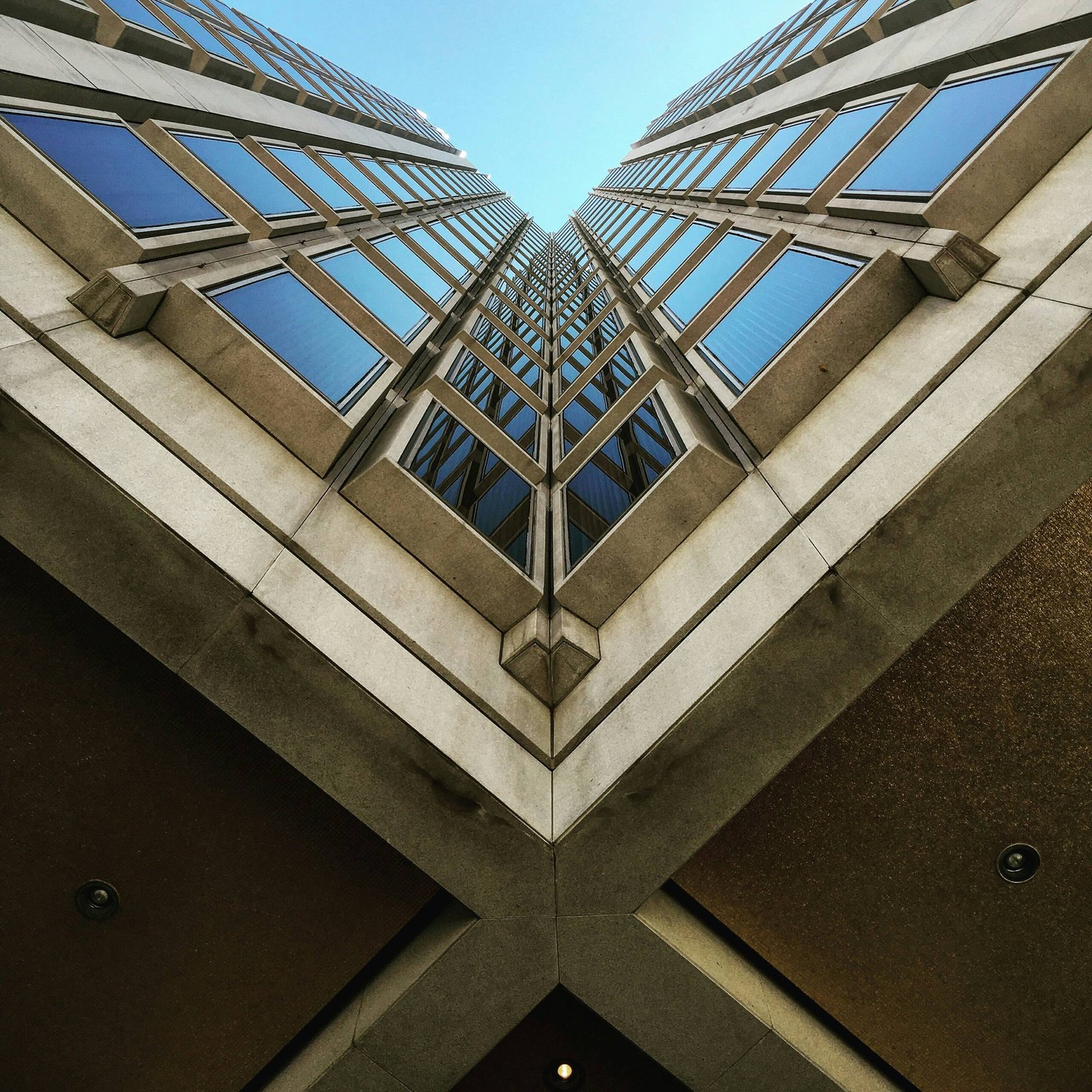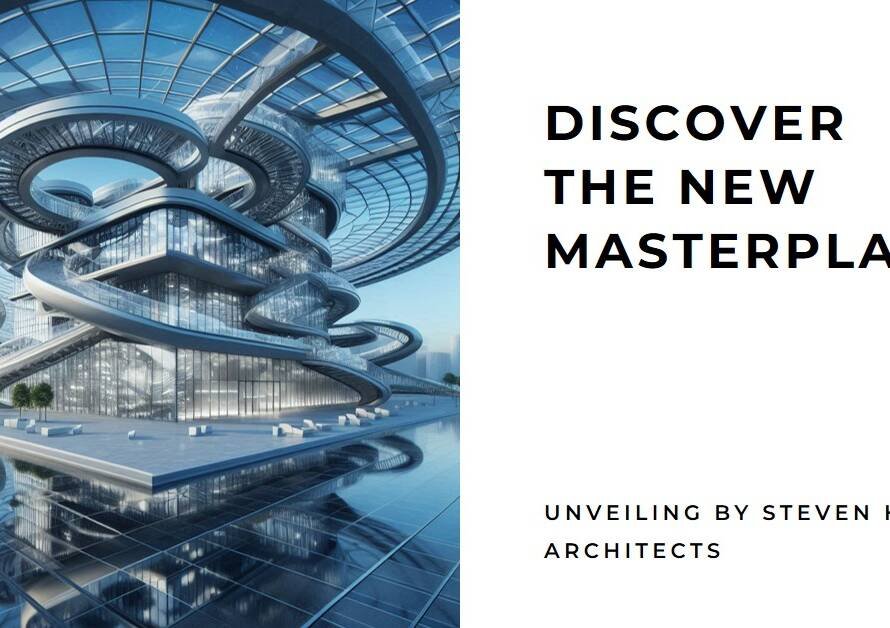
Table of Contents
Introduction: The Evolution of Architecture and Technology
The intersection of architecture and technology has a long and intricate history, shaping how built environments are conceived, designed, and constructed. From the early use of tools like the lever and pulley in ancient civilizations to the introduction of advanced materials and construction techniques during the Industrial Revolution, significant technological advancements have consistently evolved in tandem with architectural practices. These developments have not only enabled architects to push the boundaries of design but have also expanded the possibilities of what structures can achieve in terms of aesthetics, functionality, and sustainability.
In recent decades, the relationship between architecture and technology has undergone a profound transformation due to the advent of digital tools. Computer-Aided Design (CAD) software revolutionized the way architects draft their work, allowing for more precision and flexibility. Alongside this evolution, Building Information Modeling (BIM) has further enhanced the design process by integrating various aspects of a building’s lifecycle into a single digital platform. These tools have streamlined workflows and improved collaboration among architects, engineers, and constructors, thereby fostering innovative architectural solutions.
More recently, artificial intelligence (AI) has begun to emerge as a powerful force within the architectural domain. With capabilities ranging from generating design options to analyzing building performance, AI tools are now used in various stages of the architectural process. However, the question arises: will architecture be replaced by AI? While AI aids in design and project management, there is a growing debate about the potential consequences of such technology on the role of human architects. As we delve deeper into this exploration, it is essential to understand both the opportunities and challenges that AI presents to the field of architecture, considering the advancements already made and the future landscape that lies ahead.
Understanding AI in Architecture: Tools and Applications
The integration of artificial intelligence into architectural practices is a rapidly evolving trend, fundamentally altering how designs are conceived, analyzed, and constructed. One of the most significant applications of AI in architecture is through design automation. By utilizing advanced algorithms, architects can generate design iterations at a speed and complexity that far exceeds manual effort. This capability not only speeds up the design process but also enhances creativity by presenting novel solutions that architects may not have considered.
Another application is predictive analysis for project management, where AI tools utilize historical data and project metrics to forecast potential delays and budget overruns. By analyzing patterns from previous projects, these systems can offer insights that enable teams to better allocate resources and plan timelines, ultimately streamlining project execution. This predictive capability empowers architects and project managers to make informed decisions that can save both time and costs.
Energy efficiency modeling is also seeing a marked improvement through AI technologies. With the increasing emphasis on sustainable architecture, AI can simulate various energy scenarios, optimizing designs for reduced energy consumption and improved environmental performance. For instance, tools such as EcoDesigner STAR allow architects to analyze energy performance in real time, helping them create buildings that meet stringent energy standards and regulations.
Furthermore, the application of virtual reality (VR) allows for immersive client presentations. Clients can navigate through proposed spaces and experience designs fully before any physical construction begins. AI enhances this experience by adjusting environments based on client reactions, facilitating a more personalized approach to design.
Finally, AI-assisted drafting software decreases human error and increases efficiency in the drafting process. Programs that employ machine learning can suggest design modifications based on best practices and building codes, minimizing costly mistakes. These real-world examples illustrate both the benefits and limitations of integrating AI into architecture, demonstrating that while AI holds great potential, the future of architecture will still require skilled professionals to guide and refine its application.
The Benefits of AI in Architectural Design
The integration of artificial intelligence in architectural design presents a myriad of benefits that are transforming the industry. One of the most notable advantages is the significant increase in efficiency throughout the design process. AI algorithms can expedite tasks such as drafting, modeling, and even rendering, allowing architects to focus more on creativity and less on routine tasks. This heightened productivity leads to faster project timelines, enabling architects to meet demanding market needs.
In addition to enhancing efficiency, AI also broadens design options available to architects. Through machine learning, AI systems can generate multiple design iterations based on specific parameters, opening up a plethora of creative possibilities. This technology can analyze past projects and current trends to inspire innovative solutions, helping architects to explore various styles and functionalities that might have otherwise been overlooked.
Error reduction is another key benefit of incorporating AI into architectural practices. By using predictive analytics and simulation tools, architects can anticipate potential issues in project execution. These systems can detect conflicts in designs early on, which minimizes costly mistakes during construction and ensures a smoother workflow. As a result, the overall quality of the finished architecture greatly improves.
Furthermore, AI excels at analyzing vast amounts of data, allowing architects to make informed decisions based on comprehensive insights. Whether it’s examining site conditions, climate data, or user preferences, AI can process complex data sets quickly and accurately. This capability enhances the architectural process, leading to designs that are not only aesthetically pleasing but also functional and responsive to user needs.
Lastly, sustainability in architecture is significantly improved through AI technologies. By optimizing resource usage and conducting thorough analyses to reduce waste, AI contributes to more environmentally friendly design practices. Thus, the role of AI in the realm of architecture not only augments design capabilities but also aligns them with the pressing need for sustainable development.
Concerns about AI Replacing Human Architects
The advent of artificial intelligence (AI) in the realm of architecture has sparked a myriad of concerns among professionals in the industry. One of the foremost fears is the potential for job displacement. Architects worry that as AI technology continues to evolve, it could take over tasks traditionally performed by humans, resulting in a diminished demand for their expertise. The automation of design processes, project management, and even conceptual development may lead to a workforce reduction, causing anxiety among those currently employed in the field.
Beyond employment issues, there is the fear of losing the creative input that is quintessential to architectural practice. While AI can analyze vast amounts of data and generate designs based on predetermined parameters, critics argue that it lacks the intuition, imagination, and emotional intelligence that human architects bring to their work. The ability to conceive unique, tailor-made solutions that resonate with the human experience is a significant aspect of architecture that many fear could be irretrievably lost to computer algorithms.
Moreover, the ethical implications of AI-generated designs cannot be overlooked. As machines create structures, questions arise regarding accountability for design failures or ethical lapses. For instance, if an AI creates a building that is unsafe or does not meet the diverse needs of its inhabitants, who should be held responsible? Additionally, some professionals raise concerns about the potential for AI to perpetuate biases in design, particularly if the underlying datasets used to train these systems are flawed or unrepresentative.
Finally, there is worry about the personal touch that human architects imbue within their creations. A structure designed by AI might excel in function and efficiency, yet lack the warmth and uniqueness often found in human-made environments. Engaging with diverse perspectives, it becomes clear that while AI’s role in architecture might evolve, the essence of human creativity and ethical responsibility may be indispensable.
Human Creativity vs. AI Capabilities: The Debate
The discourse surrounding the potential replacement of architects by artificial intelligence (AI) often hinges on the contrasting attributes of human creativity and AI capabilities. Proponents of AI argue that machine learning algorithms can process vast amounts of data, generate innovative designs, and optimize functionality faster than human designers. However, this perspective can overlook the essential qualities that make architecture a profoundly human endeavor. The intuition, emotional resonance, and artistic vision that architects bring to their work cannot easily be replicated by AI.
Human architects possess the ability to understand cultural narratives, emotional contexts, and environmental nuances that influence their work. While AI can analyze trends and create aesthetically pleasing designs based on pre-existing patterns, it lacks the profound understanding of human experiences that inform architectural creativity. Thought leaders in art and architecture emphasize the uniqueness of human perspective, arguing that our experiences and emotional responses to spaces inform decisions in ways that an algorithm simply cannot emulate. Notably, renowned architect Frank Gehry has expressed concerns regarding a future where creativity is synthesized through algorithms devoid of human intention and emotion.
Moreover, as AI technologies continue to advance, they are evolving from mere design tools to active collaborators in the creative process. Generative design software can now assist architects in exploring various design possibilities at unprecedented speeds. However, even in collaboration, the underlying vision and intention must come from a human mind. Critics of the notion that “architecture will be replaced by AI” often argue that this perspective diminishes the importance of artistic expression and the social responsibilities that architects embody. As the architectural landscape evolves, the challenge lies in integrating AI’s capabilities with the irreplaceable essence of human creativity, ensuring that our built environments reflect both innovation and deep-rooted artistic values.


Case Studies: Successful AI-Human Collaboration
As the discourse surrounding architecture be replaced by AI continues to gain momentum, numerous case studies illustrate the successful integration of artificial intelligence in architectural projects. One notable example is the partnership between AI design tools and seasoned architects at Zaha Hadid Architects. In their approach to the design of the “Moon Village” project, AI algorithms were utilized to analyze vast datasets related to environmental conditions, materials, and spatial configurations. This collaboration enabled the architects to not only optimize the design process but also to push the limits of creativity, marrying human ingenuity with AI’s analytical prowess.
Another significant case is seen in the work carried out by Autodesk in collaboration with various architectural firms, including Bjarke Ingels Group (BIG). In a groundbreaking endeavor, AI-driven tools facilitated the design of a mixed-use skyscraper in New York City, where the algorithms provided data-driven insights that influenced the structural integrity and sustainability of the building. This synergy between human architects and AI tools exemplifies how technology can enhance efficiency, allowing architects to focus more on creative aspects while relying on AI for analyzing structural strengths and sustainability factors.
Interviews with architects involved in these projects reveal enriching personal experiences, emphasizing the enhanced collaborative process. One architect noted, “AI serves as a powerful partner in our design process, offering insights that we may overlook. It doesn’t replace our vision; rather, it complements it by enabling us to make informed decisions.” This sentiment encapsulates the prevailing notion that architecture will not be fully replaced by AI but will instead evolve into a collaborative discipline that thrives on the strengths of both human creativity and artificial intelligence.
The Future of Architecture: Co-evolution or Replacement?
The ongoing advancement of artificial intelligence (AI) presents significant transformations within the field of architecture. This evolution raises questions regarding the future roles of architects and how they will integrate technology into their practices. Will AI merely serve as a companion tool to enhance human effort, or does it hold the potential to replace traditional roles within the architectural domain? To answer this, it is essential to consider several trends that shape the future of architectural practice.
Currently, many architects are harnessing AI-driven technologies to optimize design processes, improve efficiency, and generate innovative solutions. This collaboration allows for a richer exploration of design alternatives, ultimately resulting in improved architectural outcomes. Emerging tools, such as generative design software and virtual reality, empower architects to visualize and assess multiple iterations of a space, showcasing AI’s role as a valuable partner rather than a competitor.
Moreover, architecture education is beginning to adapt to these changes by incorporating AI-related topics into curricula. This preparation ensures upcoming architects are skilled in both traditional principles and modern technologies, fostering a co-evolutionary relationship between human creativity and machine precision. Educational institutions are emphasizing interdisciplinary approaches, equipping students with the ability to navigate an increasingly technology-dependent landscape.
Potential policy developments could also influence the future of the profession. As AI continues to permeate various sectors, regulations may emerge to define its role within architecture explicitly. Collaboration between architects, technologists, and policymakers might establish ethical guidelines for AI applications, ensuring that human-centric design remains at the forefront.
Ultimately, the future of architecture may not be a matter of replacement but rather one of adaptation and collaboration. Architects who embrace AI as a complementary tool will likely find innovative ways to advance their practice in the evolving landscape.
Preparing for an AI-Influenced Architectural World
As the influence of artificial intelligence continues to expand into various sectors, the field of architecture stands at a significant crossroads. To navigate this evolving landscape effectively, both aspiring architects and seasoned professionals must actively prepare for an industry poised to undergo transformative changes. One of the most critical steps is ongoing education in AI technologies, encompassing a thorough understanding of machine learning and data analytics. Familiarity with AI-driven design tools can enhance the creative process, enabling architects to explore new possibilities. Proficiency in software that utilizes algorithms for building modeling or energy efficiency analysis can also become an invaluable asset.
Moreover, interdisciplinary collaboration is essential in an AI-influenced architectural world. Architects can greatly benefit from establishing partnerships with professionals in fields such as data science, engineering, and environmental studies. This collaborative approach encourages the exchange of ideas and helps architects gain insights into how AI can optimize designs, streamline workflows, and improve sustainability. Engaging with experts from diverse backgrounds fosters innovation and prepares architects to fully leverage the capabilities of AI technologies.
Furthermore, it is imperative for architects to maintain a mindset that is open to innovation while also preserving the core principles of human-centered design. Although AI can enhance efficiency and analytical capabilities, the human touch remains vital in architecture. Architects should prioritize the human experience in their projects, ensuring that design solutions are not only functional but also aesthetically pleasing and socially relevant. This balanced approach will help aspirants and professionals to adapt to changes while advocating for designs that enhance the quality of life for users. Therefore, by emphasizing education, collaboration, and human values, the future of architecture can coexist harmoniously with AI advancements.
Conclusion: The Complementary Roles of AI and Human Architects
As explored throughout this blog post, the emergence of artificial intelligence in the field of architecture prompts an intriguing conversation about the future roles of both AI and human architects. While the capabilities of AI in design, modeling, and project management are indeed impressive, suggesting that architecture be replaced by AI overlooks the nuanced complexities inherent in human creativity and intuition.
AI technologies are designed to optimize processes, enhance data analysis, and improve efficiency in architectural practices. They can quickly generate various design alternatives based on specified parameters, analyze structural integrity, and even predict environmental impacts. This functionality allows human architects to focus on more strategic and creative aspects of their work. Instead of viewing AI as a competitor, it is more beneficial to perceive it as a powerful tool that can augment traditional design methods.
Human architects bring a nuanced understanding of cultural context, user experience, and innovative thinking to architectural projects. Empathy, emotional response, and the ability to interpret and respond to nuanced human needs are irreplaceable qualities of human architects. The synergy between human creativity and AI’s computational strength can lead to remarkable architectural innovations, enabling the profession to evolve rather than be threatened by technological advancements.
In conclusion, while AI will undoubtedly transform the architectural landscape, it is unlikely to completely replace human architects. Instead, a collaboration between AI’s capabilities and human ingenuity will pave the way for enhanced design processes and solutions. By embracing this partnership, the architecture industry stands to gain a multitude of benefits, resulting in spaces that are not only aesthetically pleasing but also functionally superior and responsive to the needs of its inhabitants.


